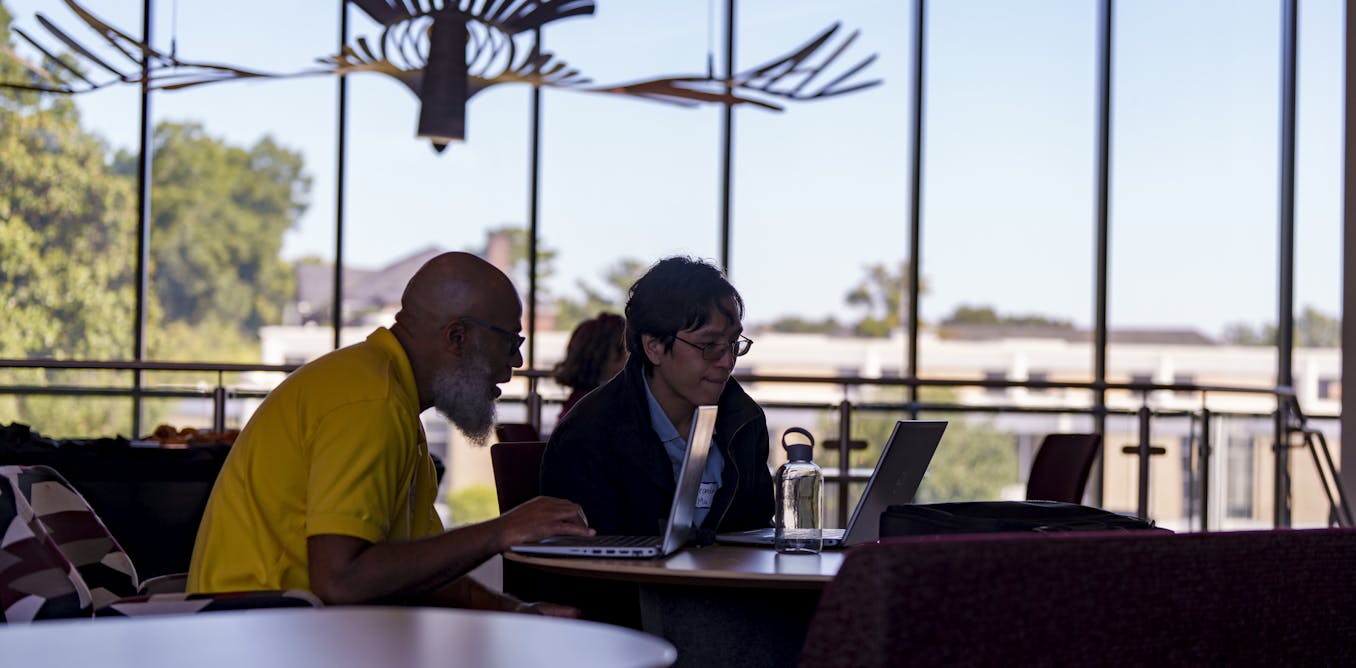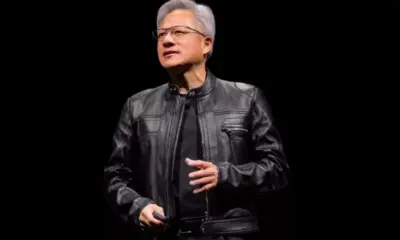Education
Universities Embrace AI Technology, Raising Concerns Over Independence

Artificial intelligence is rapidly reshaping higher education, with universities increasingly forming partnerships with technology companies. A new AI research center in North Carolina exemplifies this trend, as institutions seek to integrate AI into their curricula and research frameworks. These collaborations, while promising advancements, raise critical questions about the implications for academic independence and the public service mission of universities.
The University of Florida has initiated a significant project with Nvidia to develop one of the fastest university supercomputers, focusing on AI infrastructure and curriculum enhancement. Princeton University has also entered the AI landscape by launching the New Jersey AI Hub in collaboration with Microsoft and CoreWeave, designed to support AI startups on university-owned land. Meanwhile, the California State University system has partnered with OpenAI to provide ChatGPT Edu to all students and faculty, positioning itself as the first AI-powered university system in the United States.
As a social scientist studying educational technology, I view these partnerships as part of a long-term trend towards the “corporatization” of higher education. This shift often aligns university priorities with corporate interests, potentially undermining the core mission of public service. The rise of generative AI accelerates this trend, prompting a reevaluation of how universities can maintain their autonomy in the face of corporate influence.
The Increasing Role of Corporate Partnerships
Over the past five decades, corporate funding for university research has surged, increasing tenfold and significantly outpacing overall growth in higher education research expenditures. A critical turning point occurred in 1980 when universities were granted the right to retain intellectual property from federally funded research, facilitating the commercialization of academic work. This shift has aligned university research more closely with corporate needs, exposing institutions to market-driven motives.
While these partnerships offer financial benefits, they also encourage universities to prioritize industry alignment over public interest. The demand for skilled labor led to an expansion of higher education in the latter half of the 20th century. However, with enrollment peaking in 2010 and projected declines ahead, the urgent need for tuition revenue and research grants increasingly dictates institutional goals. This trend risks sidelining research that serves the public good as universities turn to corporate funding.
The shift from public-good scholarship to monetized services often leads to a clash between academic freedom and the commercial interests of AI firms. Financial pressures may prompt university administrators to overlook fundamental value misalignments between their educational missions and corporate objectives.
Understanding the Dynamics of AI Initiatives
The motivations driving AI adoption at universities extend beyond economic necessity. Diverse partnerships with AI companies indicate deeper dynamics at play. Institutions like Stanford University, through its Institute for Human-Centered AI, aim to influence global discussions on ethical AI while upholding a standard of elite research. Conversely, institutions such as California State University and Arizona State University emphasize improving learning outcomes and workforce development.
This indicates that motivations for AI partnerships are not solely market-driven. Historically, universities made decisions based on intellectual prestige, focusing on scholarly excellence. The digital revolution has disrupted this monopoly over knowledge production, leading to competition with various organizations that generate original research.
Generative AI represents a new frontier in knowledge synthesis, further challenging traditional academic models. In light of these changes, universities may feel compelled to forge partnerships with AI companies to maintain their intellectual status amid external pressures. This intersection of economic necessity and the pursuit of prestige could lead to a technocratic approach in higher education, where corporate-style governance overshadows the public interest.
The recent surge in AI partnerships has reignited discussions about the fundamental purpose of universities. The corporatization of higher education has resulted in conflicting institutional goals and a phenomenon known as “mission sprawl.” This ambiguity leaves many universities vulnerable to corporate co-optation and political interference, potentially jeopardizing their core values.
While collaborations with corporations can enhance research and support student initiatives, it is vital to recognize the inherent differences between corporate norms and academic principles. The process of reconciling these differing values remains unclear at many institutions, especially as AI initiatives frequently bypass traditional faculty governance structures.
As universities continue to adopt AI technologies, the implications for intellectual freedom, democratic decision-making, and commitment to public service will become increasingly significant. The balance between corporate interests and the traditional mission of higher education will require careful consideration as institutions navigate this evolving landscape.
-

 Technology4 months ago
Technology4 months agoDiscover the Top 10 Calorie Counting Apps of 2025
-

 Health2 months ago
Health2 months agoBella Hadid Shares Health Update After Treatment for Lyme Disease
-

 Health3 months ago
Health3 months agoErin Bates Shares Recovery Update Following Sepsis Complications
-

 Technology3 weeks ago
Technology3 weeks agoDiscover 2025’s Top GPUs for Exceptional 4K Gaming Performance
-

 Technology4 months ago
Technology4 months agoDiscover How to Reverse Image Search Using ChatGPT Effortlessly
-

 Technology2 months ago
Technology2 months agoElectric Moto Influencer Surronster Arrested in Tijuana
-

 Technology4 months ago
Technology4 months agoMeta Initiates $60B AI Data Center Expansion, Starting in Ohio
-

 Technology4 months ago
Technology4 months agoRecovering a Suspended TikTok Account: A Step-by-Step Guide
-

 Health4 months ago
Health4 months agoTested: Rab Firewall Mountain Jacket Survives Harsh Conditions
-

 Lifestyle4 months ago
Lifestyle4 months agoBelton Family Reunites After Daughter Survives Hill Country Floods
-

 Technology3 months ago
Technology3 months agoUncovering the Top Five Most Challenging Motorcycles to Ride
-

 Technology4 weeks ago
Technology4 weeks agoDiscover the Best Wireless Earbuds for Every Lifestyle





















